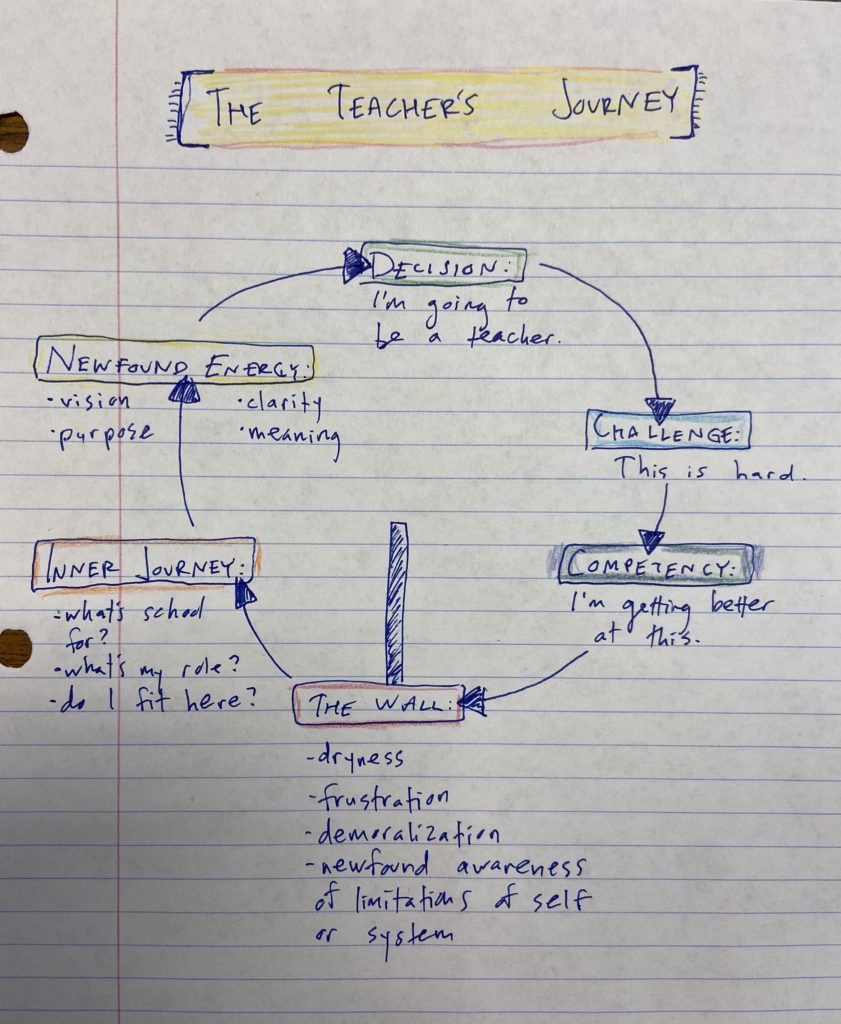It seems like the teacher's journey goes something like this:

I like this better than the two bottlenecks language from a couple weeks ago. A few reasons for that preference:
- This shows that the journey is cyclical. Good days can follow bad ones, and bad ones can be followed by good ones again.
- It's applicable at varying timescales: career, school year, month, week, day. As Susan Barber quipped on Twitter, “This happens approximately every 5 min all day long for me.”
- It reminds me of how to get through the Wall. You don't go over or around it — you go under. The Inner Journey is like a tunnel beneath the Wall; it forces us to face anew things like the Big Questions:
- What are schools for?
- What's my role for?
- What do I control?
- It reminds me that teaching involves a Decision. That's engagement. That's, “I'm going to take on the mantle, the role, the sacred duty.” It's something more than showing up. (And when we don't have the energy to muster that kind of decisiveness… we might just be at the Wall.)
If nothing else, I hope it spurs some conversation between you and those you love and work with.
At the Wall beside you; let's hang in there,
Dave
P.S. The image in this post is inspired by a couple sources:
- Bill and Kristi Gaultiere's excellent The Journey of the Soul: A Practical Guide to Emotional and Spiritual Growth
- The last few months, which have been the hardest Wall of my career so far
- Hundreds of conversations with colleagues around the world like you
John Robert Reynolds says
Yes, Dave and Susan! With my colleagues, I make frequent references to going in circles. (To modify an old saying, “The journey of a thousand circles starts with one step: Becoming a public high school teacher!”) Thank you for helping to reorient the disorienting experiences.
Dave Stuart Jr. says
John, Journey of the Soul is a triple play 👍
Jessica Murray says
This graphic is so helpful. I just found your blog and it along with this graphic adresses one MAJOR thing that I think a lot of teaching blogs or advice columns tend not to acknowledge: the work of teaching largely is INTERNAL work. It’s a recommitment, a renewal, and constant reflection that a lot of times is not verbalized. Thank you